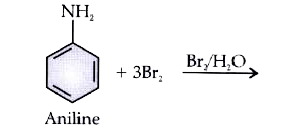During electrophilic substitution reaction protection of −NH2 group)
reduction
oxidation
alkylation
acylation
The correct Answer is:D
Topper's Solved these Questions
Similar Questions
Knowledge Check
In electrophilic substitution reaction nitrobenzene is
AMeta-directingBOrtho-directingCPara-directingDNot reactive and does not undergo any substitution−NH2 group is a strong activator towards aromatic electrophilic substiution reaction. Activating capability of −NH2 group can be reduced by treating with
ACH3IBCH3O∣∣C−ClCCH3−NH2DCH3−O∣∣C−O−O∣∣C−CH3For an electrophilic aromatic substitution reaction
AChlorine is o-p directing group and also electron releasing groupBChlorine is o-p directing group and also electron withdrawing groupCChlorine is meta directing group and also electron releasing groupDChlorine is meta directing group and also electron withdrawing group
−NH2 group is a strong activator towards aromatic electrophilic substiution reaction. Activating capability of −NH2 group can be reduced by treating with
View SolutionThe main problem encountered during electrophilic substitution reactions of aromatic amines is that of their very high reactivity. Substitution tends to occur at ortho and parapositions. If we have to prepare monosubstituted aniline derivative, how can the activating affect of −NH2 group be controlled? This can be done by protecting the −NH2 group by acetylation with acetic anhydride, then carrying out the desired substitution followed by hydrolysis of the substituted amide to the substituted amine.
Give the major product of the following reaction:

View SolutionThe example of an electrophilic substitution reaction is
View SolutionCorrect order of electrophilic substitution reaction is :

View SolutionOrder of rate of electrophilic substitution reaction is :

View Solution
